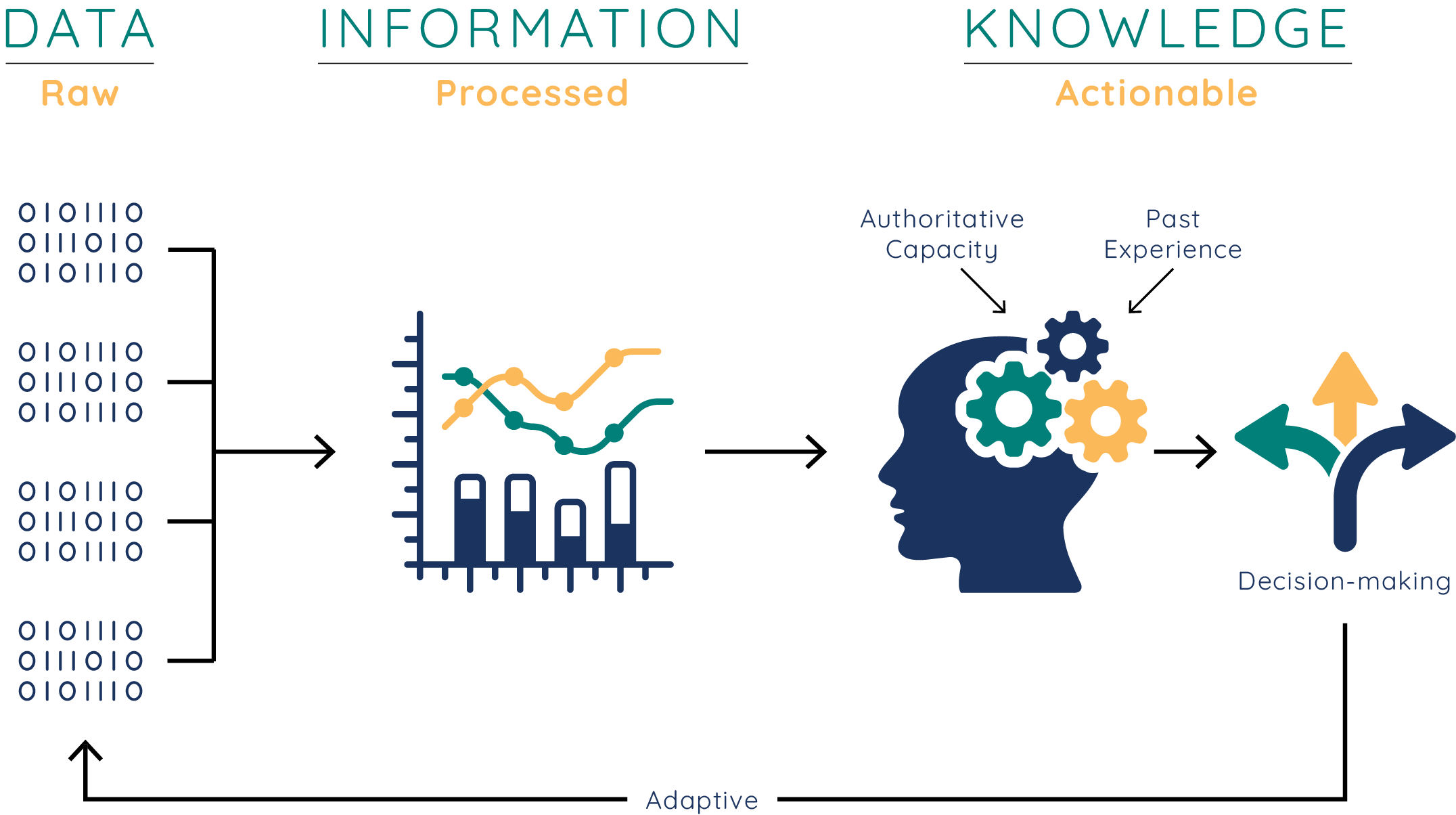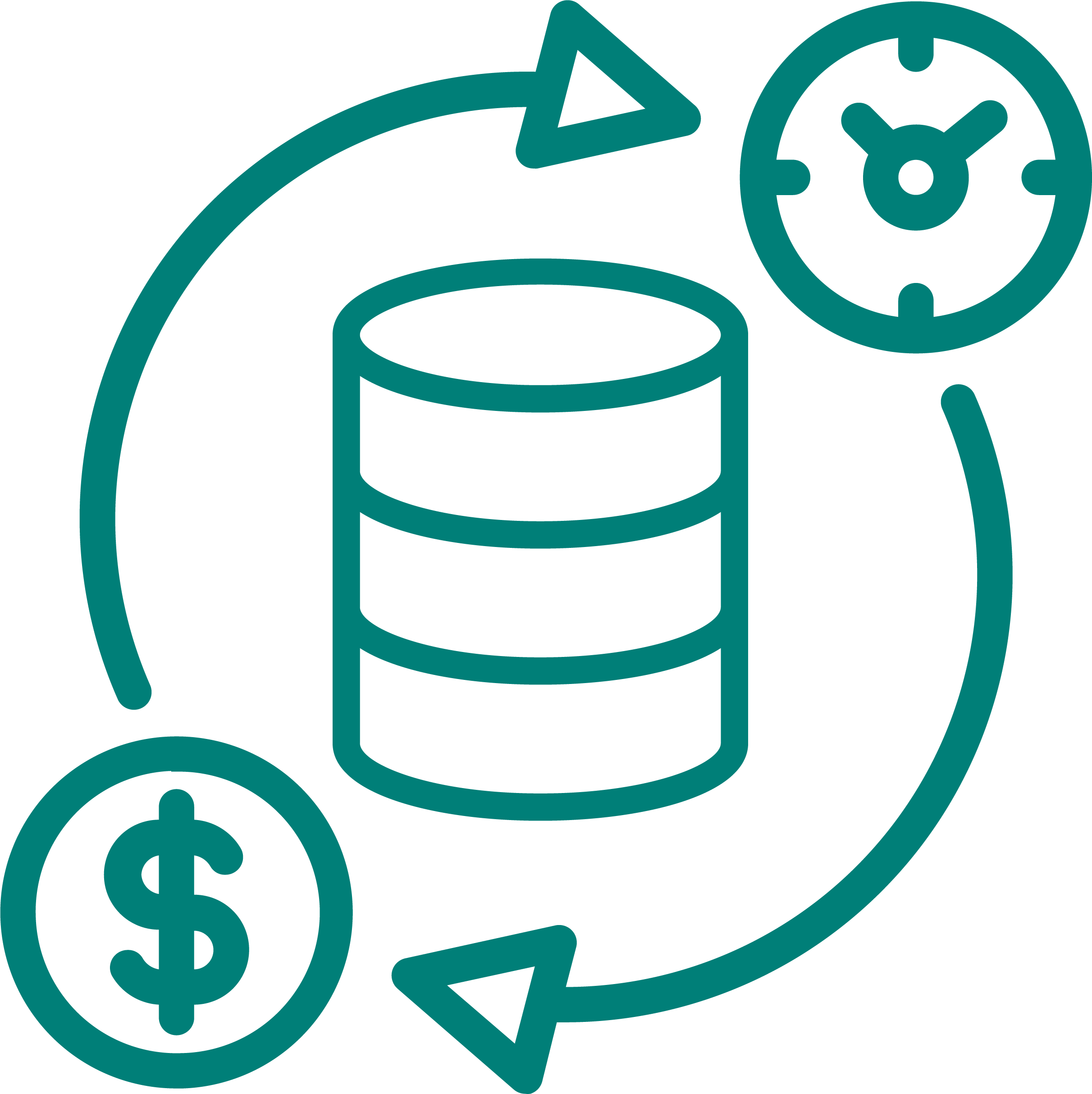What are Data, Information, and Knowledge
Data, information, and knowledge are often used interchangeably. However, these terms represent different stages of value creation from data to decision-making.
Data are the raw alphanumeric values obtained through different acquisition methods. Data in their simplest form consist of raw alphanumeric values.
Information is created when data are processed, organized, or structured to provide context and meaning. Information is essentially processed data.
Knowledge is what we know. Knowledge is unique to each individual and is the accumulation of past experience and insight that shapes the lens by which we interpret, and assign meaning to, information. For knowledge to result in action, an individual must have the authority and capacity to make and implement a decision. Knowledge (and authority) are needed to produce actionable information that can lead to impact.
The flow and characteristics of these terms are illustrated in Figure 1 and Table 1. Table 2 provides examples of data, information, and knowledge for water data.

Figure 1: The flow from data to information to knowledge.
The flow from data to information and knowledge is not uni-directional. The knowledge gained may reveal redundancies or gaps in the data collected. As a result, an actionable insight may be to change the data collected, or how those data are converted into information, to better meet user needs.
Table 1: Characteristics of data, information, and knowledge (adopted from de Vries 2018).
Data |
Information |
Knowledge |
| Is objective | Should be objective | Is subjective |
| Has no meaning | Has a meaning | Has meaning for a specific purpose |
| Is unprocessed | Is processed | Is processed and understood |
| Is quantifiable, there can be data overload | Is quantifiable, there can be information overload | Is not quantifiable, there is no knowledge overload |
Table 2: Examples of transforming water data to information to knowledge that leads to action.
Data |
Information |
Knowledge |
| Stream gage height | Convert gage height to stream flow estimates to provide summary stats for last 10 years | Restrict withdraws because streamflow is below 7Q10 |
| Amount of precipitation in rain gage | Assess whether annual precipitation is increasing, decreasing, or staying the same | Prioritize investing in floodplain mapping given increases in precipitation over last 20 years |
| Amount of lead in water samples | Combine lead level, customer, and drinking water standards data to locate violations | Alert customers with lead levels exceeding safe drinking water standards |
| Volume of treated water | Correlate volume of treated water with number of low-flush toilets installed over time | Continue investing in the low flush toilet rebate program give large water savings |
Learn More
Why are Data Hard to Value?
This series of articles explores why data are difficult to value in economic, and other terms.
Approaches to Valuing Data
This series of articles describe different methods to value data economically.
Core Principles for Water Data
Internet of Water Principles help make public data easier to find, access, and use



